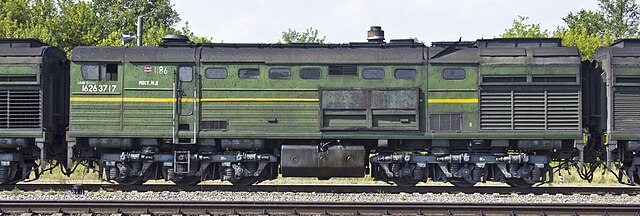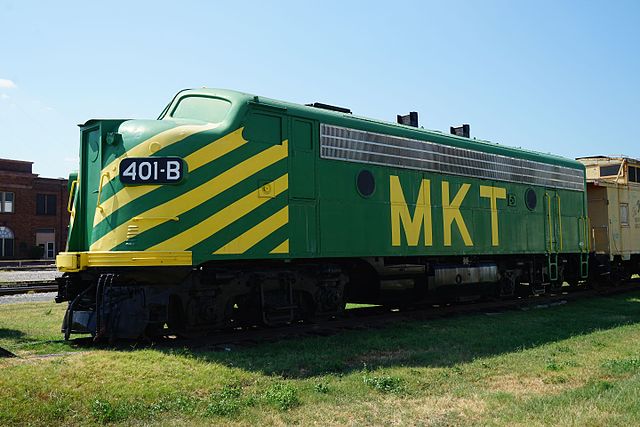A B unit, in railroad terminology, is a locomotive unit which does not have a control cab or crew compartment, and must therefore be operated in tandem with another coupled locomotive with a cab. The terms booster unit and cabless are also used. The concept is largely confined to North America. Elsewhere, locomotives without driving cabs are rare.
"B" unit of the Russian 3TE10MK diesel locomotive with a cab-styled body
Russian OPE1A [ru; uk] industrial electro-diesel locomotive for quarry railways with primary electric locomotive and two diesel-electric B units
B unit converted from an EMD F9AM locomotive. The cabin shape was preserved, but its windows were blanked out and the front door was added.
A four-axle EMD GP38-2 B-unit coupled with six-axle SD40-2 A-unit
Glossary of rail transport terms
Rail transport terms are a form of technical terminology applied to railways. Although many terms are uniform across different nations and companies, they are by no means universal, with differences often originating from parallel development of rail transport systems in different parts of the world, and in the national origins of the engineers and managers who built the inaugural rail infrastructure. An example is the term railroad, used in North America, and railway, generally used in English-speaking countries outside North America and by the International Union of Railways. In English-speaking countries outside the United Kingdom, a mixture of US and UK terms may exist.
A Swiss axle box
The backhead of UP 4017, a locomotive at the National Railroad Museum in Green Bay, Wisconsin
Boom barriers at a railway crossing in France
A caboose on display at the National New York Central Railroad Museum


![Russian OPE1A [ru; uk] industrial electro-diesel locomotive for quarry railways with primary electric locomotive and two diesel-electric B units](https://upload.wikimedia.org/wikipedia/commons/thumb/d/d3/%D0%9E%D0%9F%D0%AD1%D0%90-044.jpg/640px-%D0%9E%D0%9F%D0%AD1%D0%90-044.jpg)





